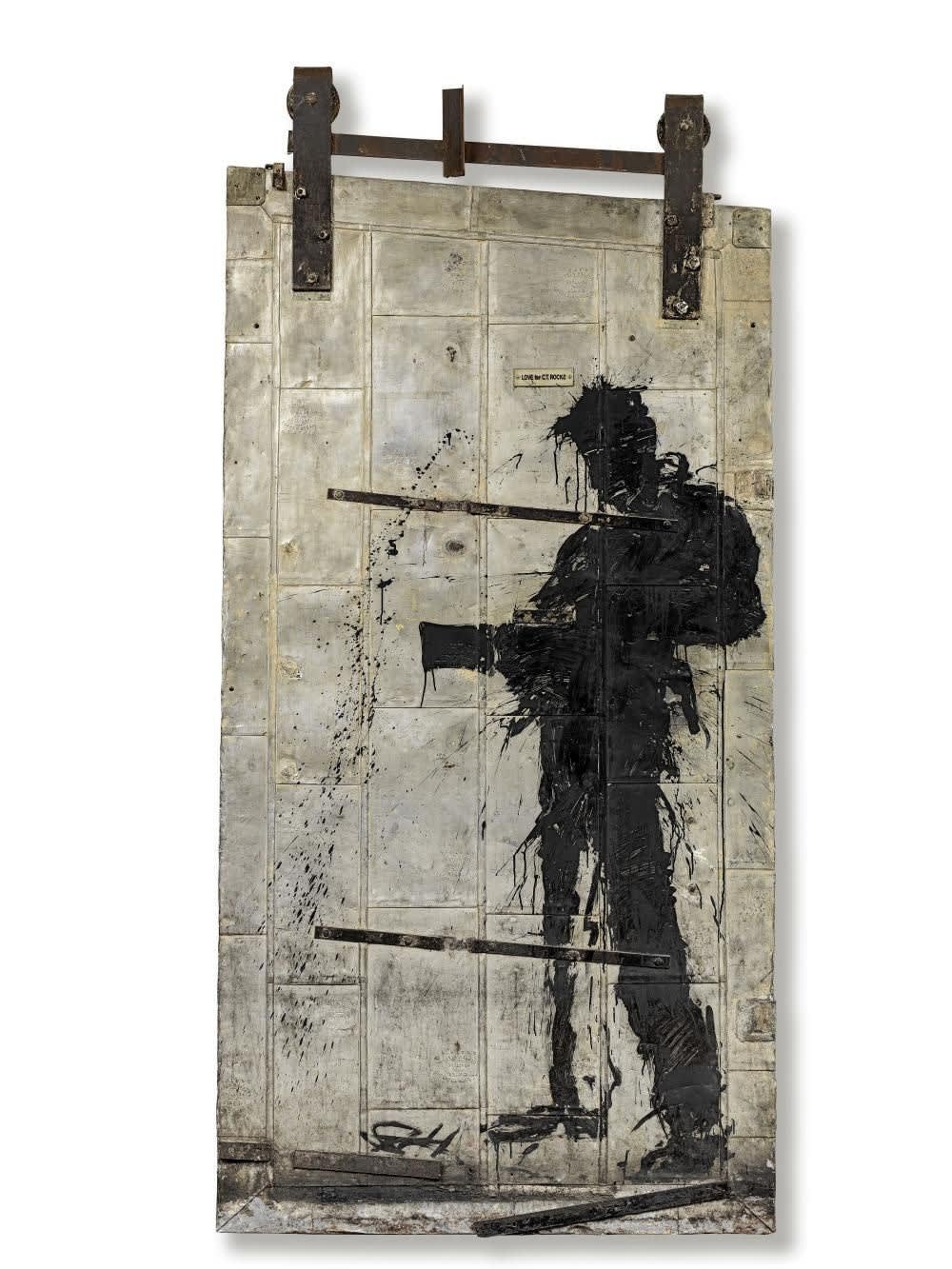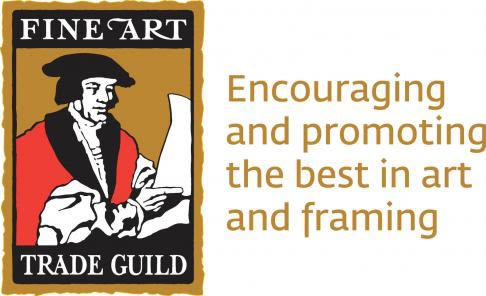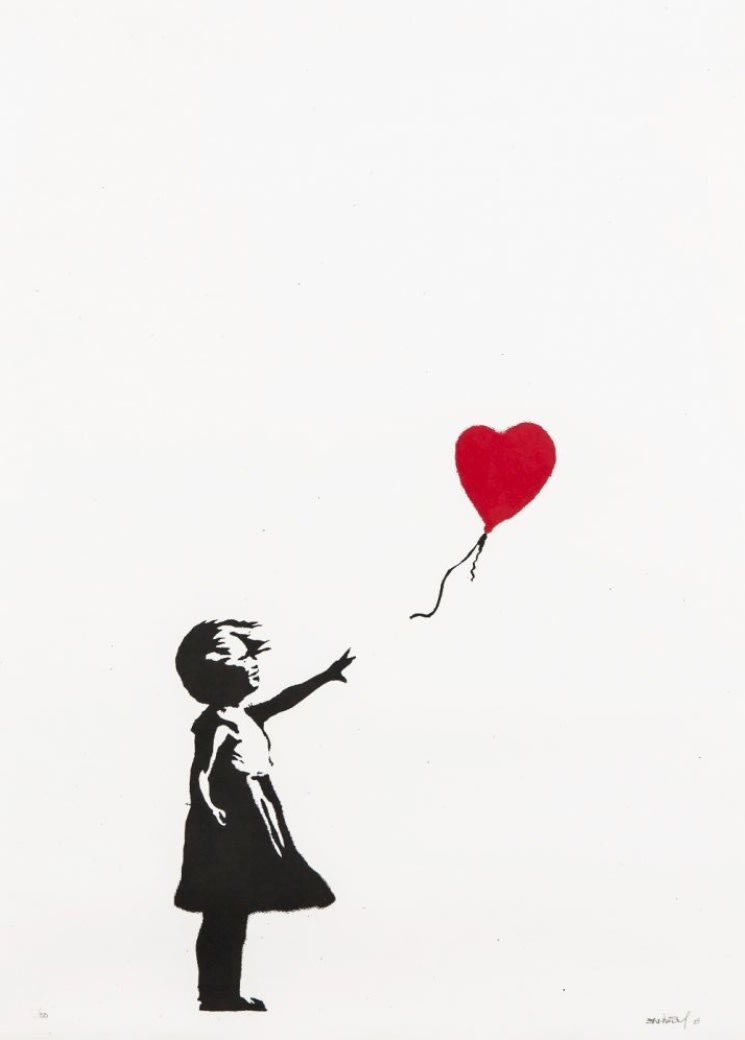“I painted the town black."
– RICHARD HAMBLETON
On January 8, 1983, the International Herald Tribune published a short feature detailing the rising passion for street art amongst collectors. Entitled “New York: The Greening of Graffiti,” the piece was likely the initial place many learned about Keith Haring, David Wojnarowicz, and Jean-Michel Basquiat. Since these artists first shifted their focus from downtown walls to major international galleries and museums, investors’ excitement has only grown. Thirty-four years later, Haring’s Untitled and Basquiat’s Untitled, both from 1982, set personal records at auction: $6.53 and $110.5 million, respectively, with the Basquiat breaking the then-record for the most expensive work by an American artist ever sold. The single image that accompanied the article was not by either late artist, however. Fountain of Youth – a pitch-black, full-body silhouette painted with a mixture of energetic wide strokes and ecstatic splatters, its arms raised and legs poised to jump – was by their peer: Richard Hambleton (1952–2017), affectionately known by many today as “The Shadowman.”

In 1982, Hambleton’s Fountain of Youth was exhibited adjacent to that record-breaking Basquiat painting in the group exhibition Fast, which foreshadowed these artists’ success. But despite Banksy and Blek Le Rat more recently praising Hambleton as an inspiration, his work did not sustain notoriety since the 1980s. This was partially by his own design. He refused to play the art-market game that others perfected. Mystery always defined his persona as well as his art. Born in Tofino, Canada, he received formal training at Emily Carr University of Art and Design and became co-director of Pumps Centre for Alternative Art. By the late 1970s though, he abandoned any semblance of a typical artist’s career. For his first avant-garde conceptual series, Image Mass Murder (1976–78), he painted fake homicide crime scenes – white outlines of bodies splattered with blood-red paint – in the night on the streets of 15 cities across North America. People would wake up and believe someone had been killed there the previous evening. An intentionally provocative commentary on the rising murder rate in the United States, the series even scared police departments and earned Hambleton his first of many newspaper headlines.
When he arrived in New York City in the late 1970s, his penchant for the night aligned with the seemingly lawless, yet artistically rich, atmosphere of Manhattan’s Lower East Side. His Shadowman series that he painted surreptitiously on city walls, resembling the figure in Fountain of Youth, addressed how people experienced life in the neighbourhood’s dark alleyways. Hundreds of these silhouettes terrified passersby, as the area’s minimal lighting turned the flat images into haunting theatrical characters that seemed as if they might come alive. “The city is part of the picture. I simply add to it,” said Hambleton.
“Hambleton was always a perpetual outsider, from the style of his work pushing against what street-artist collectors wanted at the time to his general disinterest towards giving interviews. Despite that, he found himself on the cover of LIFE
Magazine twice.

Arguably above all else, Hambleton was preoccupied by the formal aspects of painting. “Some critics fail to see that even though I use the same image on the street and in my paintings, they’re entirely different works,” he said. “The paintings are about painting.” This holds true across his oeuvre, from the Marlboro Man and Shadow Head Portraits series to the landscapes which marked his exploration of a new subject manner. The latter includes his Beautiful Paintings, in which he introduced gold and silver leaf into his continued study of abstraction.
Despite showing his work at the Venice Biennale in 1984 and 1988, in addition to numerous other international engagements, Hambleton continued to resist the art-gallery circuit and remained fiercely independent. After essentially disappearing for two decades, in 2007 he was rediscovered by a new generation when New York’s Woodward Gallery presented his Beautiful Paintings as a contrast to his Shadows. After this reawakened interest, his work was featured in a series of exhibitions sponsored by Giorgio Armani which toured the world, beginning in 2009. His prices soared as his profile rose, most notably amongst celebrities.
Shortly thereafter, two of his works were sold at the AIDS charity amfAR’s gala at the Cannes Film Festival for $920,000 USD. His epic landscape Mutiny (1985), which measures 208.6 x 675.6cm, sold at Phillips in November 2019 for $500,000 USD. Robust sales also occur privately, with paintings trading for over $1m USD. According to Artsy.net, his average auction results from the previous 36 months, as of May 2022, feature an 82.5% sell-through rate and an average sale price of $131,000, with 65% priced over estimate.
With the value of his market rising exponentially, the importance of ensuring full provenance becomes increasingly vital. Yield Gallery obtains his pieces from the most trustworthy source: People who knew Richard personally and who, like us, care passionately about his work and legacy.
As an investment, Hambleton’s work is undoubtedly following a very similar trajectory to his contemporaries, such as Basquiat and Haring, His passing in 2017 marked a grave end to his art career. It, however, acted as a catalyst for the soaring demand for his works. This resulted in an exponential increase in their value; as the art world realized only a finite number of works attributed to him remain in circulation.
The market never influenced Hambleton’s work, but now it has come to recognise the value of this singular, era-defining artist.







